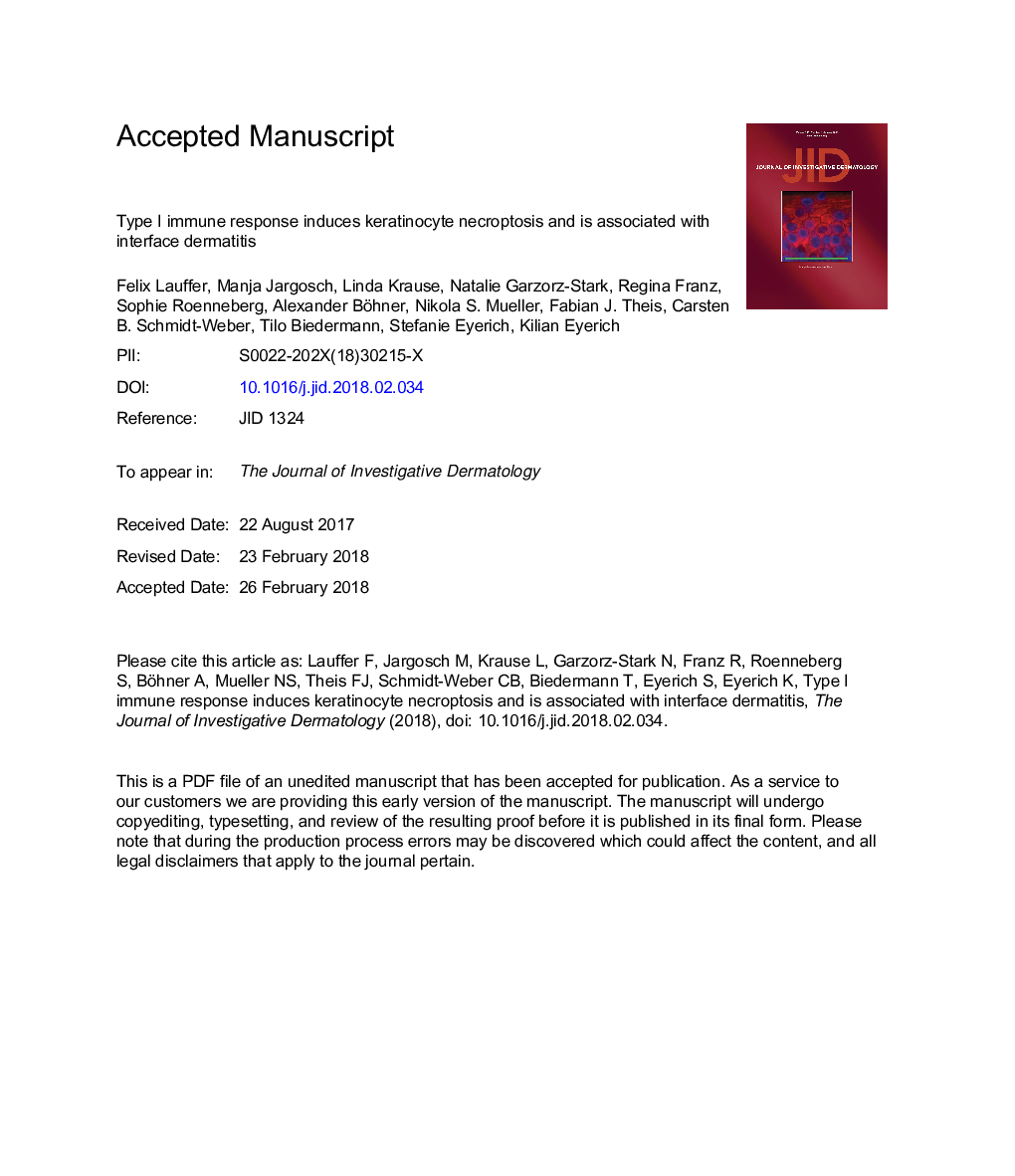| Article ID | Journal | Published Year | Pages | File Type |
|---|---|---|---|---|
| 8715811 | Journal of Investigative Dermatology | 2018 | 31 Pages |
Abstract
Interface dermatitis is a characteristic histological pattern that occurs in autoimmune and chronic inflammatory skin diseases. It is unknown whether a common mechanism orchestrates this distinct type of skin inflammation. Here we investigated the overlap of two different interface dermatitis positive skin diseases, lichen planus and lupus erythematosus. The shared transcriptome signature pointed toward a strong type I immune response, and biopsy-derived T cells were dominated by IFN-γ and tumor necrosis factor alpha (TNF-α) positive cells. The transcriptome of keratinocytes stimulated with IFN-γ and TNF-α correlated significantly with the shared gene regulations of lichen planus and lupus erythematosus. IFN-γ, TNF-α, or mixed supernatant of lesional T cells induced signs of keratinocyte cell death in three-dimensional skin equivalents. We detected a significantly enhanced epidermal expression of receptor-interacting-protein-kinase 3, a key regulator of necroptosis, in interface dermatitis. Phosphorylation of receptor-interacting-protein-kinase 3 and mixed lineage kinase domain like pseudokinase was induced in keratinocytes on stimulation with T-cell supernatant-an effect that was dependent on the presence of either IFN-γ or TNF-α in the T-cell supernatant. Small hairpin RNA knockdown of receptor-interacting-protein-kinase 3 prevented cell death of keratinocytes on stimulation with IFN-γ or TNF-α. In conclusion, type I immunity is associated with lichen planus and lupus erythematosus and induces keratinocyte necroptosis. These two mechanisms are potentially involved in interface dermatitis.
Keywords
Related Topics
Health Sciences
Medicine and Dentistry
Dermatology
Authors
Felix Lauffer, Manja Jargosch, Linda Krause, Natalie Garzorz-Stark, Regina Franz, Sophie Roenneberg, Alexander Böhner, Nikola S. Mueller, Fabian J. Theis, Carsten B. Schmidt-Weber, Tilo Biedermann, Stefanie Eyerich, Kilian Eyerich,
